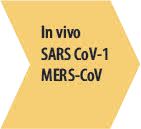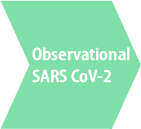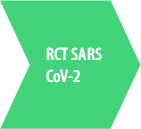Last review completed on
April 10th, 2020
Therapy Description
Lopinavir-ritonavir is a combined protease inhibitor, which has primarily been used for HIV infection. It has in vitro activity against the SARS-CoV-1 and appears to have some activity against MERS-CoV in animal studies.
Recommendation
Do not recommend due to lack of robust high quality data.
Clinical Circumstances
Level of Evidence
 = Supporting use article = Supporting use article |
 = Neutral Article = Neutral Article |
 = Contradicting use article = Contradicting use article |

  |
  |
 |
    |
  |
 |
List of Evidence/ Discussion
SARS-CoV-1
 In vitro activity against SARS-CoV-1 in 10 clinical isolates (Chen et al, J Clin Virology, 2004)
In vitro activity against SARS-CoV-1 in 10 clinical isolates (Chen et al, J Clin Virology, 2004) Observational study in 2004 showed that lopinavir-ritonavir + ribavirin reduced risk of ARDS and viral load in SARS-CoV-1 (Chu et al, Thorax, 2004)
Observational study in 2004 showed that lopinavir-ritonavir + ribavirin reduced risk of ARDS and viral load in SARS-CoV-1 (Chu et al, Thorax, 2004) The addition of lopinavir/ritonavir to standard therapy appeared to have improved clinical outcomes in a retrospective cohort (Chan et al, Hong Kong Med J, 2013)
The addition of lopinavir/ritonavir to standard therapy appeared to have improved clinical outcomes in a retrospective cohort (Chan et al, Hong Kong Med J, 2013)
MERS-CoV
 Lopinavir/ritonavir treated primates had better outcomes than untreated animals (Chan, JID, 2015)
Lopinavir/ritonavir treated primates had better outcomes than untreated animals (Chan, JID, 2015) Post-exposure prophylaxis among 43 healthcare workers was associated with a 40% decrease in the risk of infection without severe adverse (Park et al, J Hosp Infect, 2019)
Post-exposure prophylaxis among 43 healthcare workers was associated with a 40% decrease in the risk of infection without severe adverse (Park et al, J Hosp Infect, 2019)
Considerations
- Medication is not in stock and there is short supply of the medication
- Use of LPV/r is an exclusion criteria for remdesivir trial
- Surviving Sepsis Campaign COVID-19 guidelines recommend AGAINST the use of LPV/r in critically ill adults with COVID-19 (Weak recommendation, low-quality evidence)
- In the event that the medication becomes available AND there is high quality evidence to support use:
- Mild-moderate cases (within 4 days of symptom onset and not in an ICU setting), able to tolerate PO medications, RR > 22/min, SpO2 of < 94% on room air, lung parenchymal infiltrates on chest X-ray
- Dose/duration: LPV/r 400/100 mg BID x 14 days
- Monitoring: Drug-drug interactions, GI adverse effects, hypokalemia, EKG, liver function tests, HIV testing
COVID-19 Human Data
 Cao et al, NEJM March 18 2020
Cao et al, NEJM March 18 2020
- RCT of 199 confirmed patients
- No difference in time to clinical improvement or mortality at 28 days in patients with severe COVID-19 given lopinavir-ritonavir in addition to standard care versus those who received standard of care alone.
- 28-day mortality was numerically lower in the lopinavir-ritonavir group (19% vs. 25%), but this was not statistically significant
- Those who got lopinavir/ritonavir had shorter ICU stay (6 days vs. 11 days). % of patients with clinical improvement at 14 days was higher (45% vs. 30%). But no significant differences in duration of hospitalization and time to death. No differences in viral loads. Minimal AEs or safety concerns.
- This was a very ill population. There is suggestion of shorter ICU stay, and non-statistically significant clinical improvement. It is unclear if this would have some benefit if given earlier, in a more moderately sick (hospitalized, but not ICU, or early in ICU course) population.
- Li et al, not peer reviewed - available here
- Single center, exploratory, randomized, controlled trial on efficacy of LPV/r or arbidol in treatment adult patients with mild/moderate COVID-19
- Arbidol = haemagglutinin inhibitor which can effectively block the fusion of influenza virus with host cells. It was shown to have a direct antiviral effect in reducing the reproduction of SARS virus in cultured cells.
- Arbidol could effectively inhibit coronavirus upto 60 times at a concentration of 10-30 uM compared to the untreated control group.
- Groups: LPV/r, n=21, dosing: 200/50 mg q12h for 7-14 days; arbidol, n=16, dosing: 200mg TID x 7-14 days; control group, n=7
- Baseline characteristics were similar between the groups
- Primary outcome: Median time of positive-to-negative conversion of SARS-CoV-2 nucleic acid:
- LPV/r: 8.5 d (IQR 3, 13); arbidol: 7 d (IQR 3, 10.5); control: 4 d (IQR 3, 10.5) (P=0.751).
- Secondary outcomes: The conversion rates of SARS-CoV-2 nucleic acid at day 7 and 14 did not differ between groups (all P>0.53). No differences were found among groups in rates of antipyresis, cough alleviation, improvement of chest CT or deterioration of clinical status (all P > 0.05).
- Safety outcomes: 5 (23.8%) LPV/r patients experienced AEs (diarrhea, loss of appetite, and elevation of ALT> 2.5x ULN) during the follow-up period
- Out of 11 patients which progressed to severe/clinical status, 8 received LPV/r
- Limitations: young/healthy population, LPV/r group may have been sicker than other groups at baseline, small study sample, n=41 (aim was for n=125)
- Single center, exploratory, randomized, controlled trial on efficacy of LPV/r or arbidol in treatment adult patients with mild/moderate COVID-19
- Zhou et al, Lancet, March 28 2020
- Multicenter, retrospective cohort study of 191 patients with COVID-19 who discharged (137) or died (54)
- 41 patients received antiviral therapy with LPV/r of which 29 patients survived. Among the 29 patients:
- Median time from illness onset to initiation of antiviral treatment was 14 days (IQR: 10-17)
- Median duration of viral shedding was 22 days (IQR: 18-24) compared to a median duration of 20 days (IQR: 17-24) in all survivors
- The median duration of viral shedding in patients with severe disease was 19 days (IQR: 17-22) and in patients with critical status was 24 days (IQR: 22-30)
- Young et al, JAMA, March 3, 2020
- Descriptive case series of the first 18 patients diagnosed with COVID-19 in Singapore from Jan 23 to Feb 3, 2020
- Five individuals requiring supplemental O2 were treated with LPV/r
- Dosing: lopinavir/ritonavir 200 mg/100mg PO BID x 14 days
- One patient initiated therapy on day 4, two patients initiated therapy on day 5, one initiated therapy on day 11, one on day 14 of illness
- Duration of therapy ranged from 4 to 14 days
- Only one patient completed the intended 14 days of therapy due to ADRs
- Reduced O2 requirements: 3/5 patients within 3 days
- Clearance of viral shedding in nasal swab: 2/5 patients within 2 days
- Adverse effects (Nausea/Vomiting/Diarrhea): 4/5 patients
- Abnormal LFTs: 3/5 patients
- Wan et al, J Med Virol, March 22, 2020
- Retrospective descriptive study of epidemiological and clinical features, laboratory findings, radiological characteristics, treatment, and outcomes of 135 patients in northeast Chongqing with COVID-19
- All patients received antiviral therapy with LPV/r and a majority received concomitant treatment with Traditional Chinese Medicine (91.8%), antibiotic therapy (43.7%), and use of corticosteroids (26.7%)
- The authors report that LPV/r may play a role in the inhibition of viral replication especially if used at early stages. At time of publication, 98 patients out of 236 patients in the hospital (41.5%) have been cured and discharged
- Kim et al, J Korean Med Sci, Feb 10, 2020
- Epidemiological and clinical features of the first patient with COVID-19 pneumonia imported into South Korea from Wuhan
- On day 4 of the illness, after the diagnosis of COVID-19 was made, LPV/r 400/100 mg was initiated. Fever persisted for ten days. From the 14th day of illness, dyspnea began to improve, oxygen needs reduced, and lesions seen on chest radiography started to diminish.
- Lim et al, J Korean Med Sci, Feb 17, 2020
- Case report of a patient who caused one case of secondary transmission and three cases of tertiary transmission of COVID-19 in South Korea
- LPV/r 400/100mg BID was initiated on day 10 of illness
- From the next day of LPV/r administration, the B-coronavirus viral load started to decrease and no detectable coronavirus titers have been observed since then
- This could be due to natural course of the healing process, the effect of LPV/r or a combination of both
- Liu et al, International Journal of Infectious Diseases, March 6, 2020
- Retrospective, exploratory study of epidemiological information, clinical characteristics, therapeutic outcomes, and temporal progression of laboratory findings in 10 COVID-19
- Median duration between symptom onset and initiation of therapy was 5 days (IQR: 3-6).
- All patients were treated with combined therapy, LPV 400mg q12h and interferon α2b atomization inhalation, 5 million units BID or only LPV (n=1)
- Median observation period was 13 days (IQR: 4-17)
- Most adverse effects within 4 days of treatment: Diarrhea or emesis, n=5, hypokalemia, n=8
- Three patients were taken off of LPV therapy
- Will re-evaluate if more data in mild-moderate cases becomes available
Ongoing studies
Bhatnagar et al, Indian J Med Res, March 11, 2020
- In view of the evidence about effectiveness of repurposed LPV/r against SARS and MERS CoV, the Central Drugs Standard Control Organization of India approved restricted public health use of LPV/R combination amongst symptomatic COVID-19 patients.
- Hospitalized adult patients with confirmed COVID-19 pneumonia with any one of the following criteria will be eligible to receive LPV/r for 14 days after obtaining informed consent
- Respiratory distress with RR > 22/min or SpO2 of < 94%
- Lung parenchymal infiltrates on chest X-ray
- Hypotension (SBP<90 mmHg) or need for vasopressor or inotropic medication
- New-onset organ dysfunction
- High risk groups: age >60 yrs, diabetes mellitus, renal failure, chronic lung disease, and immunocompromised
- Patients will be monitored to document clinical (hospital length of stay and mortality at days 14, 28, and 90), laboratory (presence of viral RNA in serial throat swab samples), and safety (adverse events and serious adverse events) outcomes
- Comparison of Lopinaivr/Ritonavir on hydroxychloroquine in patients with mild COVID-19 ClinicalTrials.gov Identifier: NCT04307693. Korean study
- Treatment of Moderate to Severe COVID-19 in hospitalized patients. Dalhousie University (Canada). ClinicalTrials.gov Identifier: NCT04321993
- Comparison of Therapeutics for Hospitalized Patients Infected With SARS-CoV-2 In a Pragmatic aDaptive randoMizED Clinical Trial During the COVID-19 Pandemic (COVID MED Trial). ClinicalTrials.gov Identifier: NCT04328012
- Various Combinations of Protease Inhibitors, Oseltamivir, Favipiravir, and Hydroxychloroquine for Treatment of COVID19, a RCT. Evaluating combination therapy including Lopinavir/Ritonavir, but also Darunavir/ritonavir. ClinicalTrials.gov Identifier: NCT04303299
- Efficacy and Safety of Darunavir and cobicistat for treatment of pneumonia caused by COVID-19. ClinicalTrials.gov Identifier: NCT04252274
- Lopinavir/ritonavir, ribavirin + IFN-beta for COVID. ClinicalTrials.gov Identifier: NCT04276688
- Zeng YM, Xu XL, He XQ, Tang SQ, Li Y, Huang YQ, Harypursat V, Chen YK. Comparative effectiveness and safety of ribavirin plus interferon-alpha, lopinavir/ritonavir plus interferon-alpha and ribavirin plus lopinavir/ritonavir plus interferon-alphain in patients with mild to moderate novel coronavirus pneumonia. Chinese Medical Journal. 2020 Mar 6. - ChiCTR2000029387.
Other antiretrovirals
Multiple studies looking at darunavir are underway, but scant preclinical data exists.
Citations:
- Zhou F, Yu T, Du R, Fan G, Liu Y, Liu Z, Xiang J, Wang Y, Song B, Gu X, Guan L. Clinical course and risk factors for mortality of adult inpatients with COVID-19 in Wuhan, China: a retrospective cohort study. The Lancet. 2020 Mar 28.
- Li Y, Xie Z, Cai W, Wen C, Guan Y, Mo X, Wang J, Wang Y, Peng P, Chen X, Hong W, Xiao G, Liu J, Zhang L, Hu F, Li F, Zhang F, Deng X, Li L. An exploratory randomized, controlled study on the efficacy and safety of lopinovir/ritonavir or arbidol treating adult patients hospitalized with mild/moderate COVID-19 (ELACOI). medRxiv preprint. Not peer reviewed.
- Young BE, Ong SW, Kalimuddin S, Low JG, Tan SY, Loh J, Ng OT, Marimuthu K, Ang LW, Mak TM, Lau SK. Epidemiologic features and clinical course of patients infected with SARS-CoV-2 in Singapore. JAMA. 2020 Mar 3.
- Wan S, Xiang Y, Fang W, Zheng Y, Li B, Hu Y, Lang C, Huang D, Sun Q, Xiong Y, Huang X. Clinical Features and Treatment of COVID‐19 Patients in Northeast Chongqing. J Med Virol. 2020 Mar 21.
- Kim JY, Choe PG, Oh Y, Oh KJ, Kim J, Park SJ, Park JH, Na HK, Oh MD. The first case of 2019 novel coronavirus pneumonia imported into Korea from Wuhan, China: implication for infection prevention and control measures. J Korean Med Sci. 2020 Jan 6;35(5).
- Lim J, Jeon S, Shin HY, Kim MJ, Seong YM, Lee WJ, Choe KW, Kang YM, Lee B, Park SJ. Case of the index patient who caused tertiary transmission of Coronavirus disease 2019 in Korea: the application of lopinavir/ritonavir for the treatment of COVID-19 pneumonia monitored by quantitative RT-PCR. J Korean Med Sci. 2020, Feb 17;35(6).
- Liu F, Xu A, Zhang Y, Xuan W, Yan T, Pan K, Yu W, Zhang J, Patients of COVID-19 may benefit from sustained lopinavir-combined regimen and the increase of eosinophil may predict the outcome of COVID-19 progression, International Journal of Infectious Diseases (2020).
- Bhatnagar T, Murhekar MV, Soneja M, Gupta N, Giri S, Wig N, Gangakhedkar R. Lopinavir/ritonavir combination therapy amongst symptomatic coronavirus disease 2019 patients in India: Protocol for restricted public health emergency use. Indian J Med Res. 2020 Mar 11.
- Cai Q, Yang M, Liu D, et al. Experimental Treatment with Favipiravir for COVID-19: An Open-Label Control Study. Engineering. 2020.